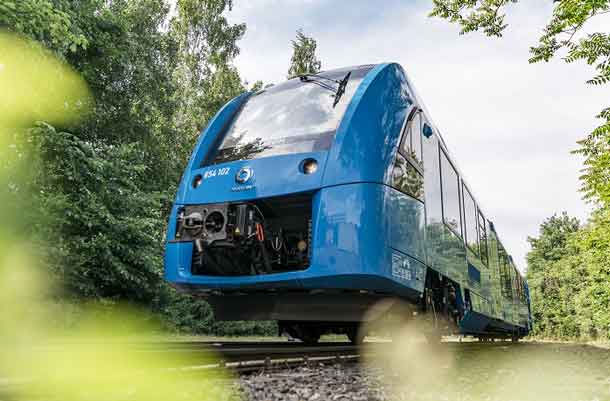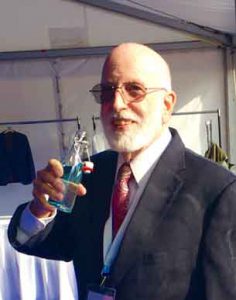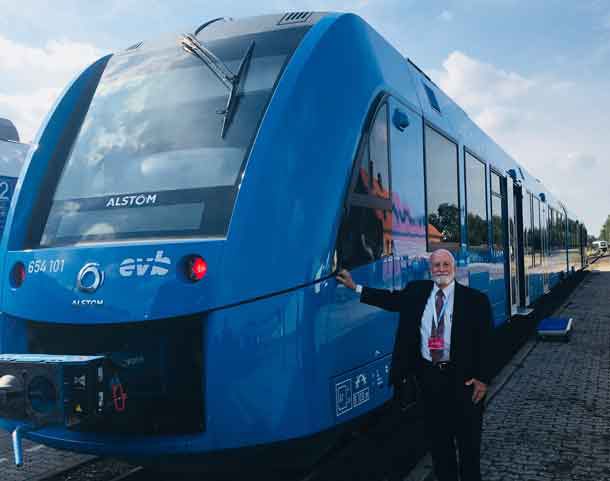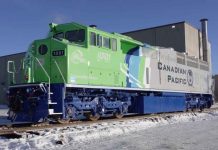

On Sunday, September 16, 2018, at Bremervörde, in the State of Niedersachsen, Germany, I boarded the first intercity hydrail train—my dream since 2003! It was Alstom’s shiny new blue Coradia iLint Hydrogen Multiple Unit light rail train, wireless electric and silent as the wind turbines on the North German horizon which will soon power most of Germany’s formerly-diesel passenger trains.

This week, reflecting on that ride, it struck me that the silence, the zero-emissions and the non-dependence on imported fuel are just the beginning of the hydrail passenger revolution. The most noticeable difference may soon be “shirtsleeve stations.”
Because hydrail trains have neither a sizzling 25,000 volt catenary power supply line dangling a few feet above them nor deadly fine particulate diesel emissions emanating from them, they suggest the possibility of a new form of passenger station that could go a long way toward luring us out of cars and off of roads. The new generation of rolling-stock is, as it were, house-trained.
Inside a station, the breath of a hydrail train is indistinguishable from yours or mine—unless we just ate something that makes us less nice to be near—in which case the train’s pure, odorless moisture is markedly nicer.
Because the new trains are so simple and clean, it should be possible and economical to build stations with automatic doors that pop open as the train approaches, pop down behind it and pop open again to let it go on its way. Air screens might prove a workable alternative to doors. That means the whole passenger loading area could easily be air conditioned in the summer and heated toasty warm in the winter.

photo credit: Detlef Matthiessen, Green Party Delegation Leader-Emeritus, Schleswig-Holstein Parliament (Landtag).
In Scandinavia, in Northern Europe and in places like Dubai, that comfort level could make all the difference in the appeal of transit over driving or submitting to the teeth-grinding adventure of early self-aimed cars.
In violently extreme locales like Novosibirsk and the Australian Outback, the prospect of train stations that feel more like airport boarding gates could make rail travel much more attractive.
But I predict that Germany, the United Kingdom and possibly France will pioneer shirtsleeve hydrail stations—not because of need but simply because they can…and have already made the decision to lead the hydrail transition for climate, health, energy independence and economic reasons.
Stan Thompson
For the latest on all aspects of hydrogen powered vehicles visit www.hydrogencarsnow.com






